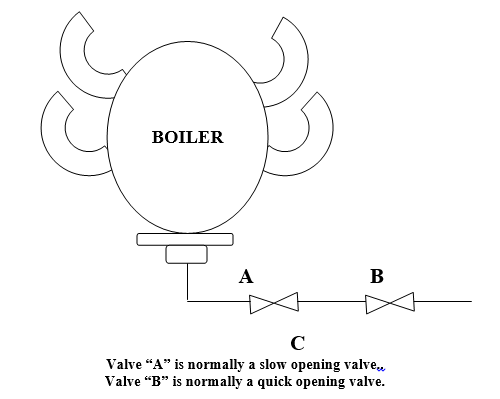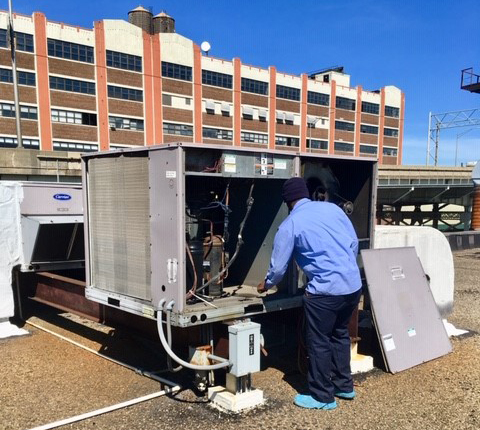The sequence of valve operation in boiler blowdown is extremely important. Despite the variety of procedures in practice, there is one, and only one, proper sequence in opening and closing the bottom blowdown valves of the boiler.
The opening sequence is to open valve B first and then valve A. The closing sequence is to close valve A first and then valve B (Figure 1). When this sequence of events is followed, the open space between valve A and valve B (shown as C) is always pressurized.

Recently a customer experienced a problem with their bottom blowdown valves. A metallurgical analysis of the parts revealed severe oxygen pitting and resultant valve failure. The cost of these failures is enormous.
Surprisingly enough, replacing the two valve stems and seats every six months accounts for only a portion of the cost. More significant was the expense incurred by shutting down the boiler and cooling it sufficiently to allow the valves to be replaced. Fortunately, the facility has sufficient backup boilers so that the resultant boiler downtime did not cause any lost time in the plant.
Solving the problem was accomplished in two parts. The first was a change in operating practices on the blowdown valve procedures. The second part was a mall piping modification. The plant’s blowdown procedure was to open valve A first, allowing cavity C to depressurize; then, open valve B.
This blowdown sequence caused hot water to flow across the valve seat at high velocity into the unpressurized area as soon as valve B was opened, causing a slow erosion of the valve seat area.
When the valves were then closed, valve B was closed first, allowing fluid to drain from cavity C. Then, valve A was closed. Between blowdowns, oxygen, which had entered cavity C as it was drained, attacked the seats and stem surfaces on both valves A and B. This oxygen attack produced pitting and galling of the valve seat and stem area. When the valve was operated, more damage occurred to the valve parts as the galled metal was ground between the sealing surfaces.
By correcting the sequence of valve operation, cavity C is always full and pressurized, eliminating the influx of air. Additionally, when valve B is opened against the dead-flow area in cavity C, no flow across seat B occurs and therefore, there is no erosion of the valve seat.
Valve A, normally a slow opening valve, can be repaired or replaced at any time without shutting down the boiler, as long as the integrity of valve B is maintained. However, replacing valve B requires the boiler to be taken offline and cooled.
By instituting these simple operating procedures for bottom blowdown, unnecessary boiler downtime can be avoided, and equipment repair costs and overall boiler efficiency can be improved.
Mark Botsford, CWT
District Manager
THE METRO GROUP, INC.
mbotsford@new.metrogroupinc.com
315.345.2437


